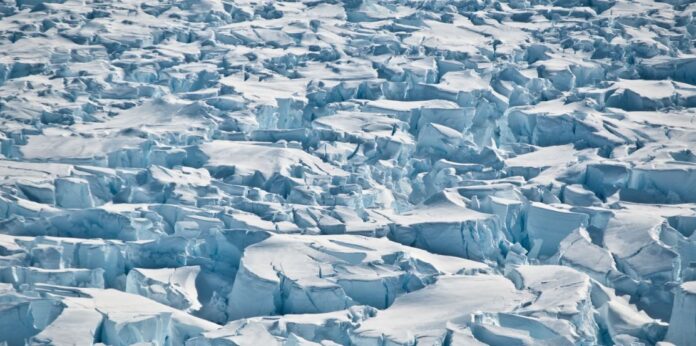In a groundbreaking discovery, Stanford University researchers have utilized artificial intelligence (AI) to reveal a significant flaw in the way scientists have traditionally modeled Antarctica’s ice behavior. The study, published recently, indicates that current predictions about ice movement and melting across the Antarctic continent may be overly simplistic, potentially skewing forecasts critical to understanding global sea level rise.
The team harnessed the power of machine learning, combined with high-resolution satellite imagery, to analyze the complex dynamics of Antarctica’s vast ice shelves. Their findings challenge long-held assumptions, showing that the ice does not behave uniformly as earlier models suggested. Instead, the researchers identified a striking pattern: while ice near the continent’s interior experiences compression, a staggering 95% of the ice is stretching toward the ocean. This movement follows an anisotropic pattern, meaning its physical properties—such as speed and direction—vary depending on the orientation, adding a layer of complexity to how ice loss occurs.
Also Read: Protesters Flood Belgrade in One of Serbia’s Largest Anti-Government Rallies
This revelation has far-reaching implications. Antarctica’s ice shelves play a critical role in regulating global sea levels, acting as barriers that slow the flow of land-based ice into the ocean. If these shelves are melting or shifting in unexpected ways, as the Stanford study suggests, coastal communities worldwide could face heightened risks from rising waters sooner than anticipated. Accurate forecasting, the researchers argue, is now more urgent than ever.
The study marks a significant leap forward in Earth science, showcasing the transformative potential of AI in unraveling the planet’s most pressing mysteries. By integrating advanced algorithms with detailed satellite data, the team has set a new standard for precision in climate modeling. According to the researchers, this is just the beginning. They believe AI-driven approaches could soon refine predictions not only for Antarctica but for climate systems globally, offering hope for more effective strategies to mitigate the impacts of climate change.
As the world grapples with escalating environmental challenges, Stanford’s breakthrough underscores the growing importance of innovative technology in safeguarding the future.
Key Points:
- Stanford Breakthrough: Stanford University researchers used artificial intelligence (AI) and high-resolution satellite imagery to uncover flaws in traditional Antarctic ice models.
- Unexpected Ice Behavior: The study revealed that 95% of Antarctica’s ice is stretching toward the ocean in an anisotropic pattern, while ice near the continent’s interior is compressed, challenging previous uniform assumptions.
- Implications for Sea Levels: The findings suggest that ice loss may occur in unexpected ways, potentially affecting global sea level rise and threatening coastal communities.
- AI’s Role: Machine learning enabled more precise analysis of ice dynamics, highlighting the power of AI in improving climate predictions.
- Future Impact: The discovery sets the stage for more accurate forecasting and could enhance climate modeling worldwide, marking a new era in Earth science.



